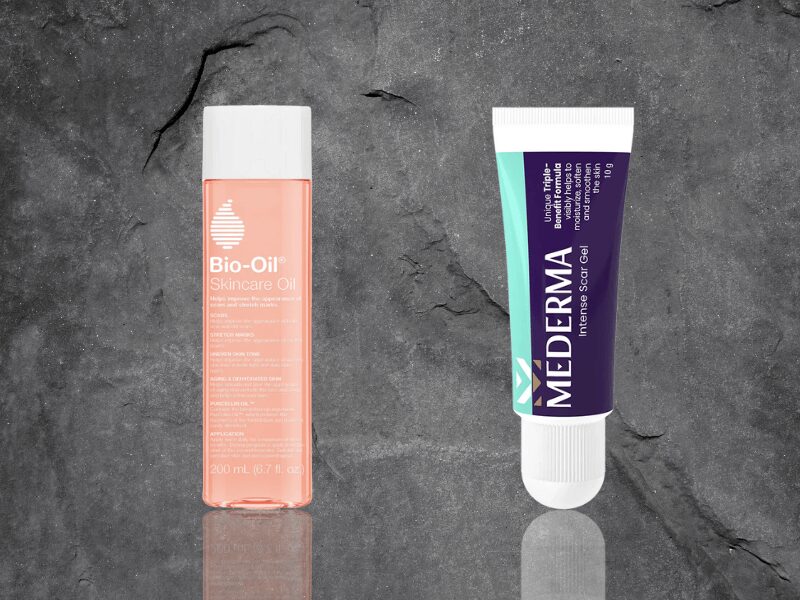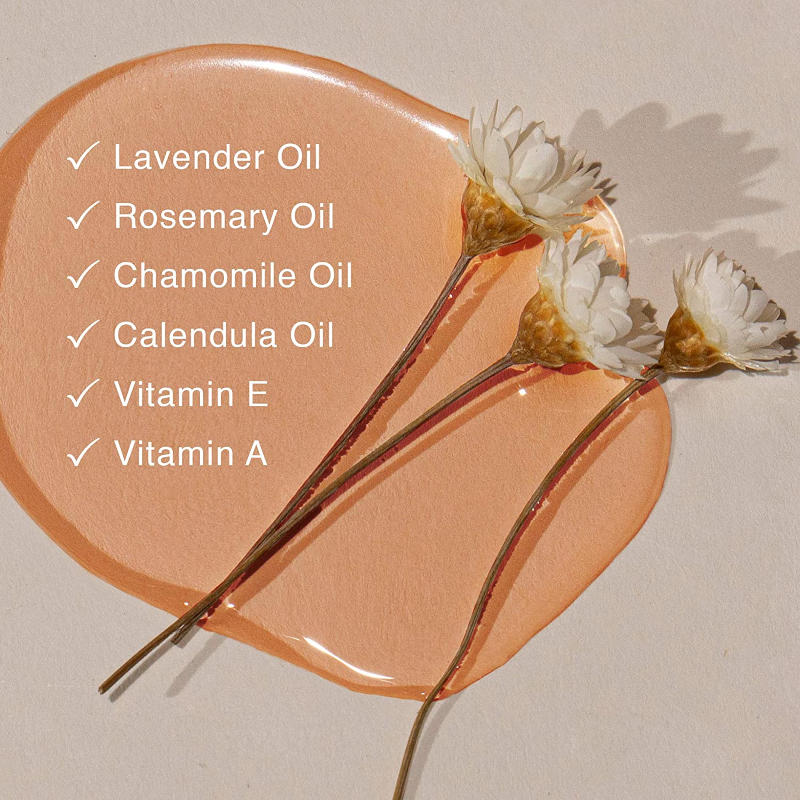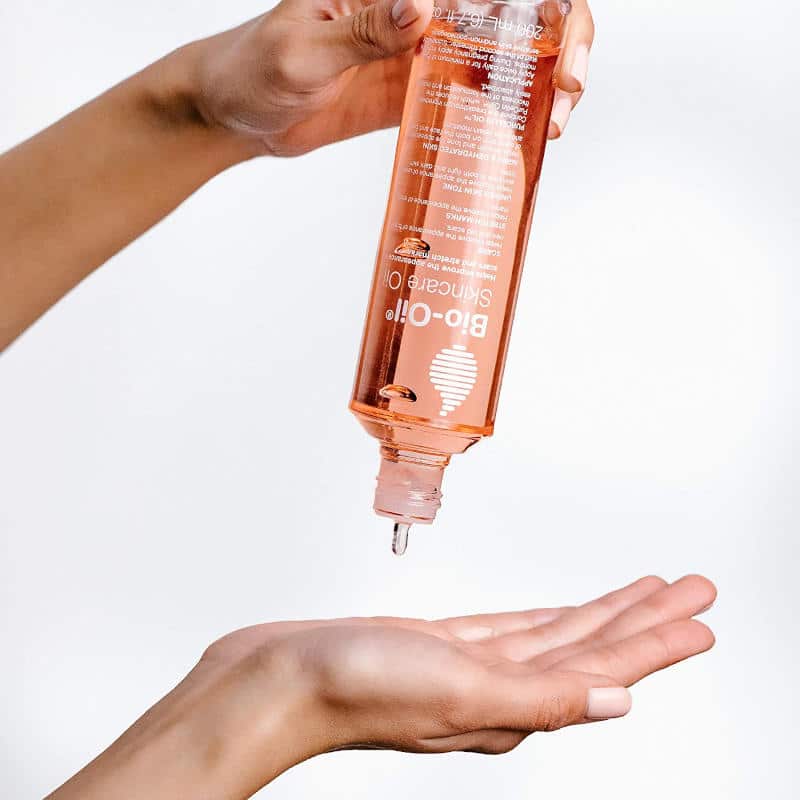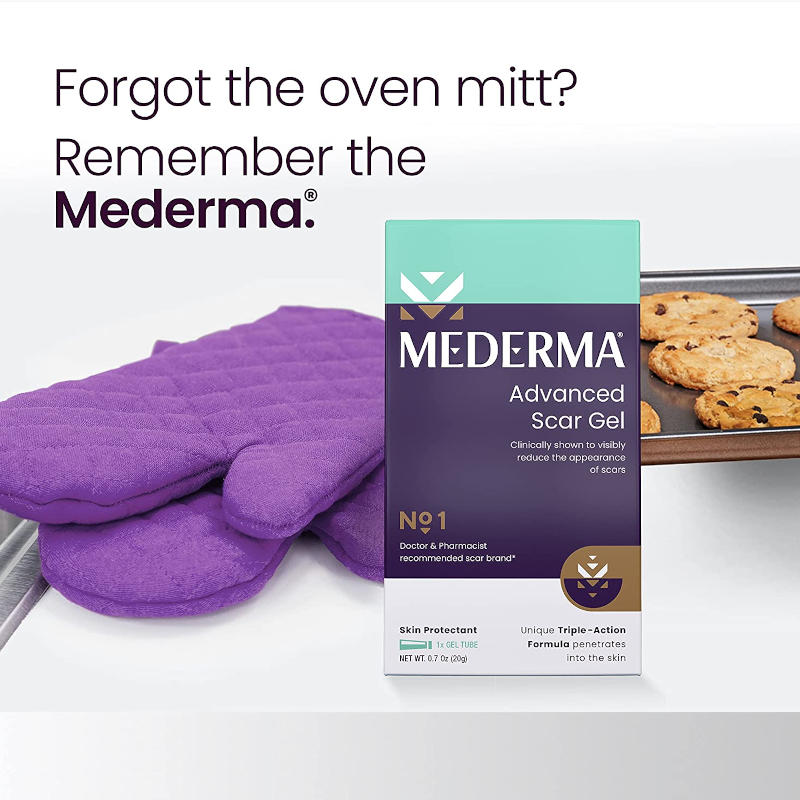
Comparison Summary
Bio-Oil® Skincare Oil, 6.7 oz.
- Best For: New Scars, Stretch Marks
- Ingredients: Mineral Oil, Vitamin A, Sunflower Seed Oil, Chamomile Oil, Lavender Oil, Rosemary Oil, Calendula, Bisabolol, Vitamin E
- Medical Evidence: Limited
- Customer Reviews: Outstanding
- Visible Results: 4-8 Weeks
- Application: 1-2x Daily
- Price per Oz: $
Mederma Advanced Scar Gel, 0.7 oz.
- Best For: New and Old Scars
- Ingredients: Onion Extract, Allantoin, Panthenol, Hyaluronic Acid
- Medical Evidence: Mixed
- Customer Reviews: Excellent
- Visible Results: 8+ Weeks
- Application: 1x Daily
- Price per Oz: $
Bio-Oil vs Mederma
Here's a good analogy:
- Bio-Oil is like Vaseline: it's good for dry skin but won't improve scars or stretch marks
- Mederma is like Neosporin: it's good for low risk scars like burns, cuts & scrapes, and bruises, but it's not the best option for treating hypertrophic scars or keloids
For high risk scars (e.g. hypertrophic scars and keloids from surgery, accidents, or acne), the gold standard for effective scar management is a silicone gel or silicone sheet.
That's because silicone is safe, supported by decades of clinical studies, and recommended by leading dermatologists in the International Clinical Recommendations on Scar Management.
Finally, PurCellin Oil, the company's "breakthrough ingredient", is actually a synthetic ester called cetearyl ethylhexanoate that's very commonly used to reduce a formula's consistency. (source: Dr. Steve Humphries)
Based on my review of the key ingredients, there's nothing special about Bio-Oil that would support its advertised effectiveness for scars, stretch marks, or uneven skin tone.
In short, Bio-Oil is a mineral oil blended with plant and essential oils plus a viscosity adjuster.

Now, let's discuss the clinical trials provided by the manufacturer:
- Photobiology Laboratory of the Medical University of South Africa (2005)
- Department of Dermatology @ Peking University First Hospital (2012)
- proDERM Institute for Applied Dermatological Research (2010)
- proDERM Institute for Applied Dermatological Research (2017)
All studies (except #2) focused on Bio-Oil's effectiveness for reducing scars and stretch marks. However, I found a number of problems with these studies:
- #1-3 are only available on Bio-Oil's website (not published in a peer-reviewed journal)
- #1, 2, and 4 were only single-blinded (double-blinded is better for eliminating bias)
- We are only told the % of patients that improved, but not the % improvement
- We are not told what the "control group" is (most likely no treatment)
Perhaps in response to these types of criticisms, Bio-Oil authorized a second study at the proDERM Institute for Applied Dermatological Research in Hamburg, Germany.
In this study, 80 volunteers with non-hypertrophic scars and stretch marks applied Bio-Oil on treatment scars for 8 weeks (with no treatment on control scars).
Here were the final results after 8 weeks:
- Blinded Investigator: using an Observer Scar Assessment Scale, blinded investigators (i.e. they don't know which scars were treated) found a 5% improvement in mean scar scores
- Non-Blinded Patient: using a Patient Scar Assessment Scale, non-blinded patients (i.e. they know which scars were treated) found a 14% net improvement in mean scar scores
Overall, Bio-Oil only produced a small improvement in scar scores (5% and 14%) compared to a control of no treatment (the lowest performance benchmark).

In addition, here's how patients responded to a follow-up questionnaire (% who agreed):
- Long-lasting, soft, and supple skin: 93%
- Caring effect: 87%
- Quick absorbance: 84%
- Improves skin appearance: 61%
- Scars / stretch marks are less pronounced: 51%
- No benefit to scars / stretch marks: 17%
Most patients agreed that Bio-Oil provided a hydrating effect but only 51% believed it improved their scars or stretch marks, while 17% actually said Bio-Oil had no effect at all!
Finally, here's my personal opinion of Bio-Oil based on 3+ months of usage:
- Application: it's a light oil but feels somewhat greasy (I have oily/combo skin)
- Results: my experience with Bio-Oil very much echoes the clinical trials - my skin felt more moisturized and it helped offset the dryness of my acne treatments, but it did not produce any improvement in my facial acne scars (mainly hypertrophic scars)
- Side Effects: none
My Verdict: All things considered (the key ingredients, clinical studies, and my own experience), I recommend using Bio-Oil for dry skin only because there's insufficient scientific evidence to support its advertised effectiveness for scars and stretch marks.
If you're looking for a scar treatment, keep reading as I'll review Mederma in the next section.
- Low Risk of Scarring: no family history of keloids, no sensitive areas like the breast/chest
- Low Patient Concern: you're okay with how your scar turns out, regardless the outcome
In other words, I recommend using Mederma for less serious wounds, such as mild burns, cuts & scrapes, bruises & accidents, and other minor injuries.
That's because the key ingredient in Mederma Advanced Scar Gel is onion bulb extract (a.k.a. Cepalin in Mederma's marketing materials and allium cepa in the ingredient list).

According to the 2014 International Clinical Recommendations on Scar Management (Part 2), a highly influential research paper authored by the world's leading experts on scar treatment, there's conflicting evidence on the effectiveness of onion extract for scars.
Some studies showed positive evidence, like the original clinical trial by Draelos et al. (2012) that was sponsored by Merz Pharmaceuticals (the parent company of Mederma).
In short, this study found a statistically significant difference in scar appearance between Mederma-treated scars (test group) and non-treated scars (control group) after 4-8 weeks.
However, there's a number of major flaws with this study:
- Control Group: in this study, the control scars were left completely untreated. This is an extremely low benchmark and even then, the test group only surpassed the control group after 4 weeks of treatment. I'd be more convinced if the control scars were treated with at least a moisturizer as keeping scars hydrated improves wound healing.
- Sample Group: out of 44 participants, the vast majority were Caucasian (39), followed by African American (4), and Hispanic (1). As you might expect, the Fitzpatrick skin type was mostly I and II (both are considered very light skin tones). However, this sample almost entirely excludes ethnic skin types which creates a bias because abnormal scar formation like keloids is more common in those of African, Asian, and Hispanic descent.

Other studies found that onion extract was no better than similar topical treatments but resulted in more frequent side effects (itchiness, redness) that caused patients to stop using it. (source: International Wound Journal, 2021)
In addition, many studies used multiple active ingredients in their formulations which made it more difficult to isolate the effects of onion extract. (source: Dermatologic Surgery, 2014)
Finally, here's my personal opinion of Mederma Advanced Scar Gel based on 6+ months of using it on my chest keloids:
- Application: it's very easy to apply (a bit sticky but dries quickly)
- Results: I did not see any significant improvements in scar height, thickness, or redness, however, my scars did feel slightly smoother
- Side Effects: I experienced the occasional itchiness, but the more serious side effect was that the area where I applied Mederma turned slightly darker in color (discoloration)
My Verdict: Taking into account the key ingredients, clinical studies, and my own experience, I recommend Mederma Advanced Scar Gel for low risk scars as the medical evidence is mixed. Mederma may help minimize scars from minor injuries and accelerate the recovery process.
For high risk scars, however, I recommend using a silicone gel or silicone sheet because it's safe (no side effects), clinically proven for scar treatment, and reasonably affordable.

